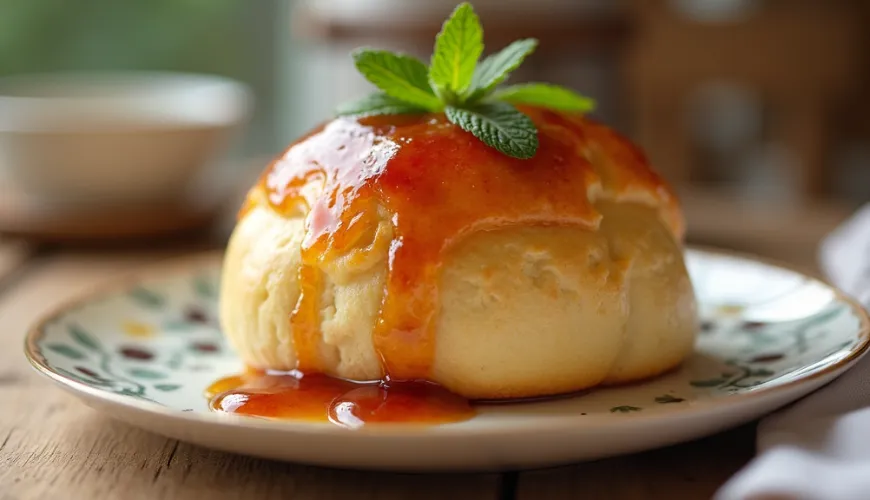
Homemade brioche is a luxury you will fall in love with too

The Sweet Aroma of France - How to Bake the Perfect Buttery Brioche
Soft, fluffy, slightly sweet, and perfectly buttery – brioche is a symbol of French baking artistry. This iconic pastry marvel comes in many forms, more than one might initially think. Whether you envision it as a golden ball with a crispy crust or as a braided plait, one thing is certain – true brioche has its place not only on the French breakfast table but also in the kitchens of baking enthusiasts around the world.
Interestingly, although brioche has a reputation for being a luxurious pastry, its origins date back to the Middle Ages. The first mentions of brioche appear as early as the 14th century in Normandy, where it was baked as a festive pastry with a high content of butter and eggs. Today, it is as much a symbol of French gastronomy as the croissant or baguette. While most people associate it with Paris, there are many regional variations – such as the famous miller's brioche, which has a more rustic texture and resembles sweet bread.
What Makes Brioche Special?
Brioche is not your ordinary sweet pastry. The secret to its uniqueness lies in the ratio of ingredients: a high content of butter (often up to 50% of the flour weight), egg yolks, quality yeast, and lengthy rising. This process results in a dough with a delicate, elastic structure that literally melts in your mouth when baked. Unlike classic cakes and buns, brioche has a slightly moist, almost buttery fluffy crumb and a tender crust.
Its use is surprisingly versatile – it tastes great simply with homemade jam, but it also serves well as a base for French toast or even a gourmet burger. In some cafes, a savory version is served with smoked salmon or goat cheese.
French Brioche - A Time-Tested Recipe
When you mention "classic French brioche," most bakers will think of the iconic "à tête" shape – dough in a mold with a small ball on top. This shape is not just aesthetic – the small "hat" helps the dough rise evenly. But if you don't have a special mold, you can also use a regular bread or cake pan.
The French brioche – a recipe passed down from generation to generation – is not complicated, but it requires patience and quality ingredients. The key is not to rush the rising – ideally, it should take place in two phases: first for a few hours at room temperature and then overnight in the refrigerator, where the dough develops its full flavor.
Basic Recipe for French Brioche
To prepare the dough, gather 500g of all-purpose flour, 70g of sugar, 10g of salt, and 10g of dry yeast – or 25g of fresh if you prefer. Add 5 eggs, mix everything well, and then slowly incorporate 250g of softened butter into the mixture. Once done, don't forget to set aside one more egg for brushing – it will give the result a beautiful golden color.
Mixing all the ingredients will result in a soft, sticky dough that should be thoroughly worked (preferably with a mixer) for at least 10–15 minutes. After the first rising, let the dough rest overnight in the refrigerator. Follow with shaping, a second rising, and baking at 180°C until golden. The result? A fluffy golden loaf with an irresistible buttery aroma.
In some recipes, a bit of orange zest or vanilla is added to the dough to provide a gentle aromatic note. A flavor variation is filled brioche – for example, with chocolate, candied fruit, or nuts.
Miller's Brioche - The Rustic Sister of the French Classic
While traditional French brioche is a symbol of elegance and delicacy, miller's brioche (in French "brioche du meunier") has a slightly firmer structure and is often made from a mix of various flours, including whole grain. The resulting texture is coarser, the flavor earthier, and the color darker. It is perfect for a hearty breakfast or as a base for savory sandwiches.
The preparation of miller's brioche does not differ much from the classic version, only the ratio of ingredients is adjusted. In some versions, yogurt or sour cream is added to the dough, giving the pastry a slightly tangy undertone. Another difference lies in the use of stone-ground flour, which has a higher fiber content and gives the dough a richer flavor.
You can realistically imagine it as an alternative to ordinary toast bread – just several levels higher. Picture a weekend morning, toasting a slice of miller's brioche, spreading it with avocado, sprinkling it with salt, pepper, and perhaps a few seeds. So simple, yet so delicious.
What is the Magic of Homemade Brioche?
At a time when store shelves are filled with industrially produced pastries, homemade brioche becomes a small luxury. Not only because of the longer preparation time but also because when baking at home, you have full control over what you eat. Quality butter, fresh eggs from a local farmer, and flour from organic agriculture – all these affect not only the taste but also the nutritional value of the outcome.
Moreover, home baking brings a certain kind of meditation. Many people appreciate that kneading dough, waiting for it to rise, and the aroma wafting from the oven have a therapeutic effect. As the famous French chef Julia Child said: "Baking is not just about recipes; it's about sharing and love."
If you have children, involve them in the preparation – rolling balls or braiding is fun and can create lovely memories. And besides, what could be better than a shared breakfast with freshly baked brioche, still warm, with honey or homemade jam?
Tips and Tricks for Perfect Results
- Add the butter only after thoroughly processing the dough without it. It ensures better incorporation and texture.
- If you don't like overly sweet pastries, you can reduce the amount of sugar – the brioche will be more neutral and suitable for savory dishes.
- Dough may initially seem very soft and sticky – this is normal. Thorough mixing and subsequent chilling in the fridge will help process it.
- Store brioche wrapped in a towel or in an airtight container – it will stay moist for several days.
Recently, vegan versions of brioches have appeared, where plant-based fats replace butter, and eggs are substituted with flaxseed or applesauce. The result may not be entirely identical to the original, but for those wishing to avoid animal products, it offers an interesting alternative.
Whether you choose the classic French version, the rustic miller's variant, or a bold filled combination, one thing is certain – brioche never disappoints. It is a pastry that brings joy, pleasure, and the scent of home. And that's where its true magic lies.

